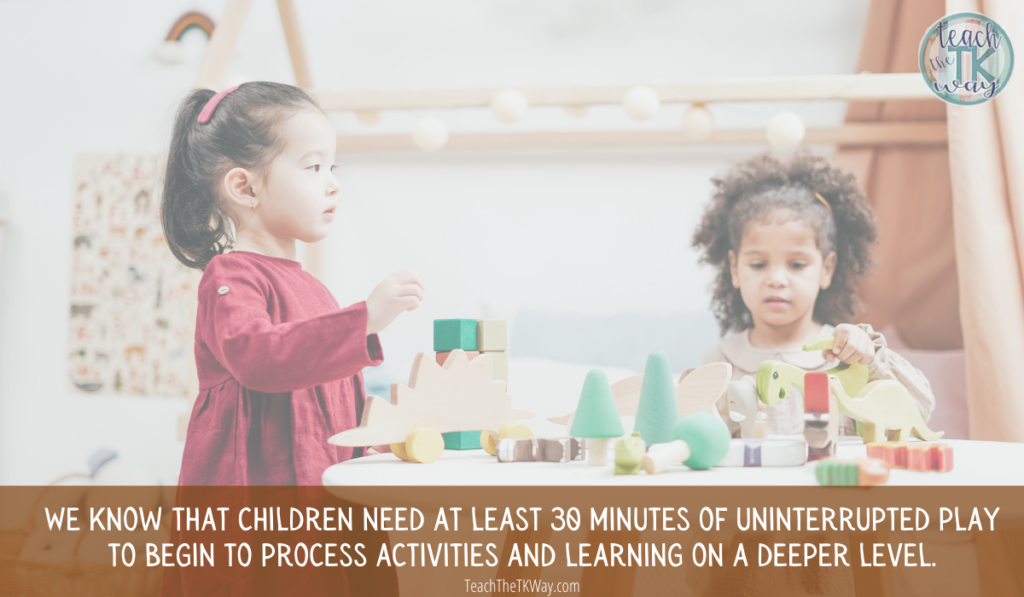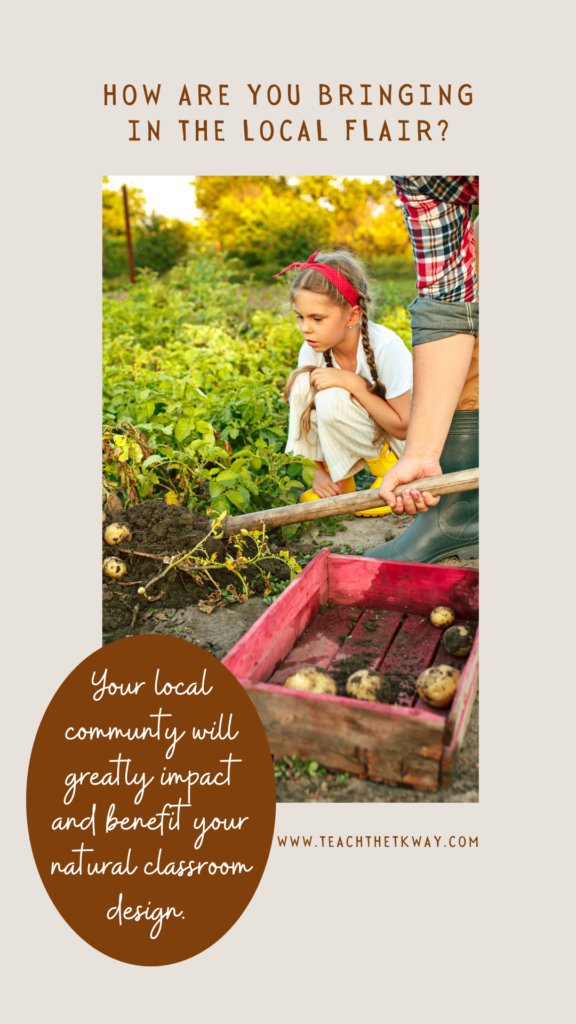When we think about nature based ideas for learning many times it’s all about plants and creepy crawlies. In this series, I am going to break down the ideas letter by letter and show you how to apply nature-based ideas to any classroom, in any program.
A is for authors: Hands down Richard Louv changed the way I will think about nature based learning spaces forever! His nature deficit disorder had me rethinking every classroom environment I created since first reading his book in 2005! Another must-have nature book, is Balanced and Barefoot b Angela Bascom. Whether you are a traditional classroom teacher, parent, or nature-based enthusiast her book is well worth the read!! Who are your GO-TO authors whether nature-based or not? From one book lover to another tell me below! So much has changed in the last 25 years of my journey through education.
But as a firm believer in lifelong education, and professional development, I can attest to watching the pendulum swing back toward hands-on curriculum plans, and intentional teaching practices. My journey toward a natural classroom was greatly impacted by the greats. Books from Lisa Murphy, Richard Louv, Katie Wood Ray, and Juliet Robertson are still found scattered across my desk. Audible was on repeat most days. It was after realizing the impact these PD books were having on the journey, that I started a professional literature library and refer to it, even today. What are you reading to level up your teaching practice?
B is for blocks: Blocks for engineering, math, science, literacy, and more. Blocks are an integral part of a nature-based classroom. They allow for heavy work with sensory seekers. They offer non-traditional math concepts for learning, they encourage creativity, engineering, spatial awareness, and more. And when you add clipboards and pens to the block area for recording purposes- you add a layer of literacy for your reluctant writers. What other standards do you see in the block center? The learning always outweighs the mess!!
We know that children need at least 30 minutes of uninterrupted play to begin to process activities and learning on a deeper level. Let the mess unfold while they prepare and plan what they will eventually design and build or create! Think about all of the skills learned while cleaning up too! There is no judgment here, I am here to support you whether you allow messy exploration or it is still a work in progress. We are all in different stages of our teaching journey and are at different levels of comfort when it comes to including nature based ideas in our teaching style. Typically your level of comfort follows your years in the classroom and the age or specialty group you teach.

Nature Based Ideas: Including The Local Community In The Learning
C is for community: Adding local community-aspects to your learning space helps calm the chaos. Creating a classroom that supports all students is as easy as creating a family tree, hopes and dreams display, or including the local community in your classroom. A family tree can be a real branch where family photos hang for the children to see. As well as a small bulletin board area that includes pictures from home, or family drawings. The hopes and dreams area is a favorite too. I send home an email to the caregivers and ask them to write 2-3 things they hope for their child. I print them out and include them in a display. This is especially great for older students who can read. If you teach young students make sure to read the messages to the children and return to them often.
D is for desk: UNPOPULAR OPINION- I no longer have a teacher desk. When I realized how a natural classroom was helping my students feel a sense of calm I also realized my desk was my arch-nemesis. It made the space feel cluttered, chaotic, and like my to-do list was never-ending. I would pile things up. Things I thought I needed to do -all day long- and that growing pile was giving me anxiety whether I realized it or not! It was the first thing I saw each morning- and it stopped me in my tracks some days!
I have space for everything to be put away at the end of the day, and use the student tables as my work area. That helps me clean up at the end of each day and put a stopping point on my never-ending list! And when I put the work away I feel a sense of calm- whether it’s complete or not- it is closure for the day’s requirements. What vibe does your teacher area give?
Including natural based ideas with classroom, the design will help create a peaceful intentional environment. So many of you reached out and said your desk was your sanctuary! And I love that! I am so glad that those of you with desks have a peaceful area to retreat to and those of you who have removed your desk have been able to take the visual overwhelm off your plate! That’s a win for everyone in my book!

Adding Flair to Your Natural Classroom
E is for the environment: The environment plays a huge role in classroom management. Is your learning space set up for success? Many teachers have been telling me that they aren’t sure how to create a calm atmosphere in a traditional space. Or they have rules and guidelines that tell them what their space should look like. Without regard for the actual students. It’s time to create a peaceful environment- no behavior charts needed. I chat a lot about the classroom environment and learning spaces inside the Natural Classroom Specialist Program and the intentional environment mini-course.
Make sure you, your students, and your community are reflected in your authentic materials. Rather than always opting for commercialized products try bringing in intentional components and items that will create a community feeling!
F is for Flair: The ABCs of a natural classroom series has been a fun one for me and all of you! I have educators reaching out to see what is next, get some design dilemma ideas, and unpack standards all with me as their guide! What flair are you adding to make the learning space your own? For me, it’s all about the plant wall and propagation station! And a special frog figurine that helps me remember my journey through education. Do you include one small item in every classroom you create to make it intentionally yours?
Are You Ready To Get Outside?
G is for Gardens: Tabletop Gardens, Butterfly Gardens, Vegetable Gardens, Flower Gardens. Use the garden to cover math science and art standards. Giving students live growing components teaches them empathy, Earth stewardship, and academic concepts like life cycles, in real-world settings. Include a gardening component in your daily lessons. Get set up with the correct materials and tools. Miniature gardening gloves, plant markers, sharpies, watering cans, child-safe scissors and collection baskets are great items to have on hand. Once the students have collected the flowers and plants, teach them how to dry and save the flowers. This is a great extender. My students love to use those pressed flowers for art projects later in the year.
H is for heavy work: Do you allow or encourage heavy work in your classroom? Sensory seekers typically don’t know how to ask for the necessary stimulation that will help regulate their systems. Instead, they act out and exhibit challenging behaviors. It is our job as educators to recognize their needs and offer opportunities to learn self-regulation before it becomes an issue. Moving large items like wood rounds, chairs, and even brick blocks can help with the sensory input needed. Including trampolines indoors, and encouraging the creation of obstacle courses both indoors and out will encourage vestibular movement. All necessary components to help regulate challenging behaviors. Rather than stopping the movements, we as educators need to encourage them to calm the chaos.
Next Time In The Nature Based Ideas Series…
This series has been a great beginning to open the conversations between educators, administrators, and families. Come back next week for the next 8 letters in the series!
Need more inspiration for creating a learning space? Create a space that supports learning and helps students and teachers destress. Adding natural elements will help bring the outdoors in and ultimately calm the classroom.






One Response